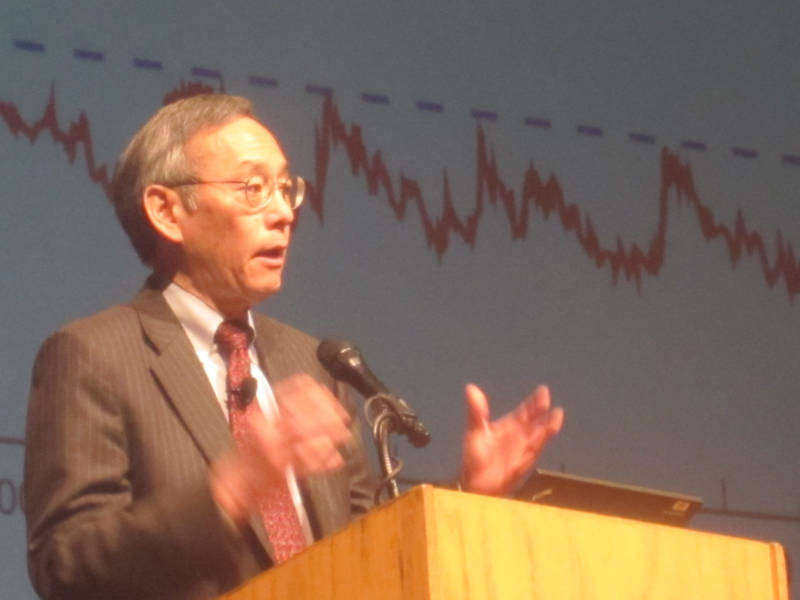
Energy Secretary Steven Chu returned to his old stomping grounds at Stanford University yesterday with a broad outline for jump-starting “a clean energy industrial revolution.” Speaking to a packed auditorium of students and faculty, Chu advocated the passage of a comprehensive energy bill, saying that increased innovation and investment in “clean tech” is essential for American competitiveness, as well as for reducing dependence on foreign oil and mitigating climate change:
“We are right now in a state of paralysis. There are many businesses who say ‘No, no, we can’t do this, this country was founded on cheap energy, that’s what I want.’ That’s just holding off the inevitable. So if we hold off the inevitable for another 5 or 10 years, I think we will lose. Because the other countries are moving. And then we play catch up. And then we import their stuff. That’s what’s at risk. The future of the prosperity of the US is at risk. Energy touches everything.”
Chu said the United States is “not doing so well” in terms of clean energy innovation and cited the drop in US market share in photovoltaics from 44% in 1996 to less than 10% today.
“The US innovation machine is the best in the world,” he said, and then recited a dismal laundry list of fields in which the US is no longer leading the way, including auto fuel efficiency, hybrid car batteries, energy transmission, energy transmission equipment, and nuclear technology.
When asked by an audience member why the US doesn’t commit to a Manhattan Project-style endeavor to solve the energy issue, Chu explained that a project at that scale would have an annual cost in the tens of billions. In comparison, the current base budget of the DOE is $3 billion per year.
“I agree. We should do that,” he said. “Tell people in Congress how important it is.”
Key to America’s success, he said is an energy bill that sends signals to the private sector that clean energy is a profitable venture, through incentives and tax breaks. He said that the federal government plays a role in grants and loan guarantees, but to scale technologies from the idea stage to the factory floor, private investors must play a role.
“America has an opportunity to seize the day and to lead in what has to be a new industrial revolution,” said Chu. “It’s our choice. Do we want to be leaders or followers?”
As if on cue, it looks like Los Angeles is about to crush one plan that might have helped put southern California at the forefront of clean energy generation and transmission. The Riverside Press-Enterprise reports today that Los Angeles officials will likely announce tomorrow that they’re pulling the plug on the contentious project known as Green Path North. The project would have installed 80 miles of high-voltage lines and towers to carry geothermal, wind and solar energy from Imperial County to Los Angeles and some Inland cities. The plans have met with opposition from environmental groups and communities along the proposed corridors.
The project was featured last year in a radio series for Climate Watch by KQED’s Rob Schmitz, on plans to get clean energy from southern California’s deserts to its cities.
One thought on “Chu: Time to End “Paralysis””
-
Pingback: California Behind in Weatherizing Homes | KQED's Climate Watch
Comments are closed.
